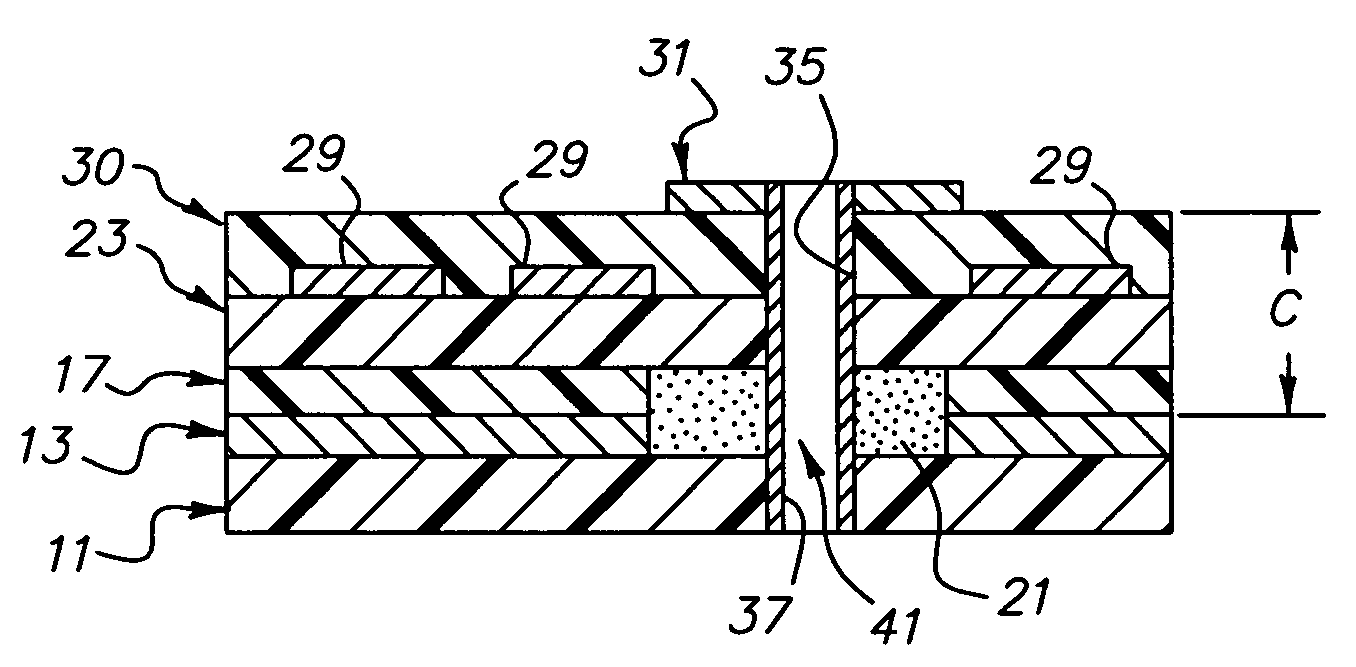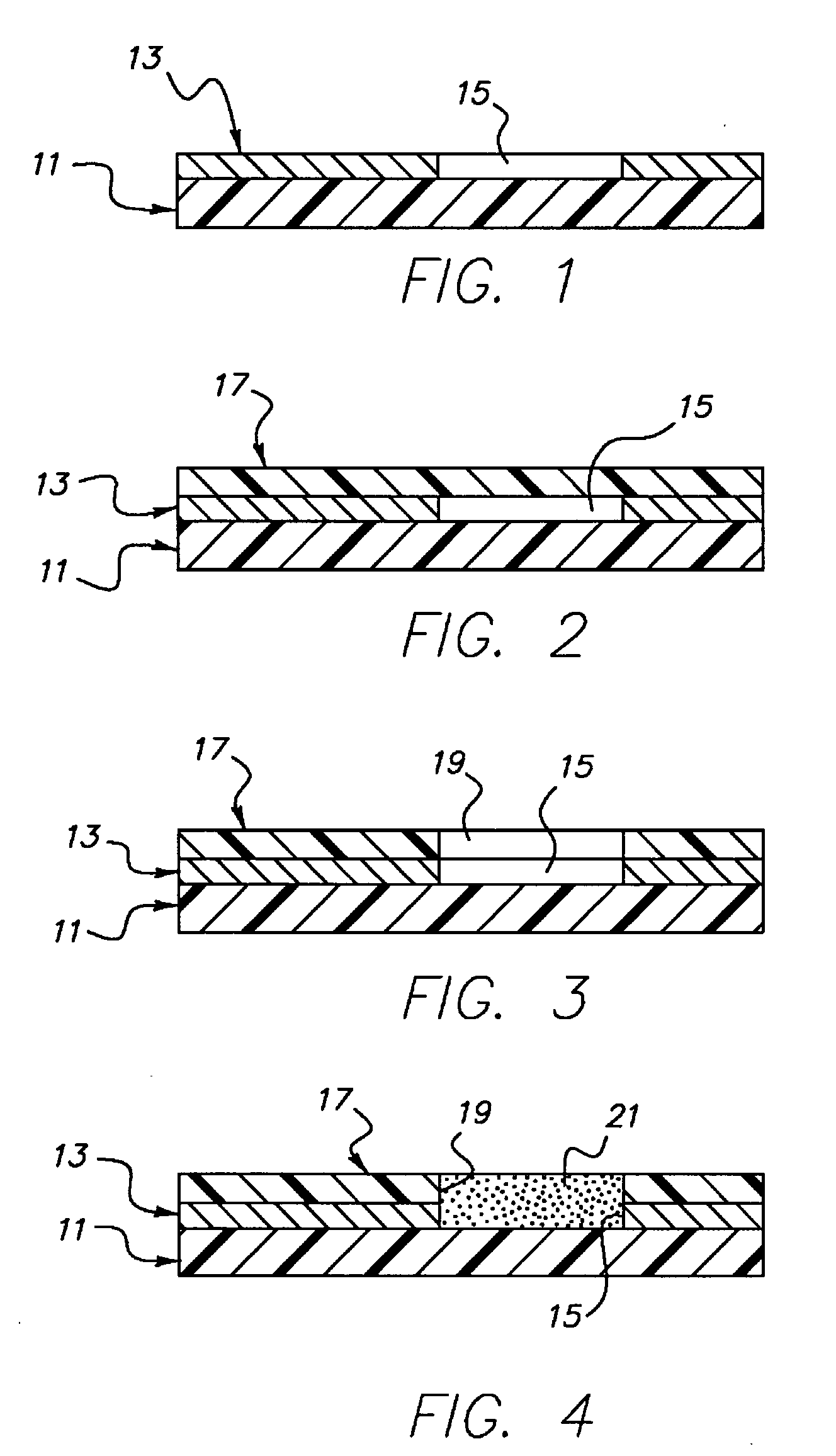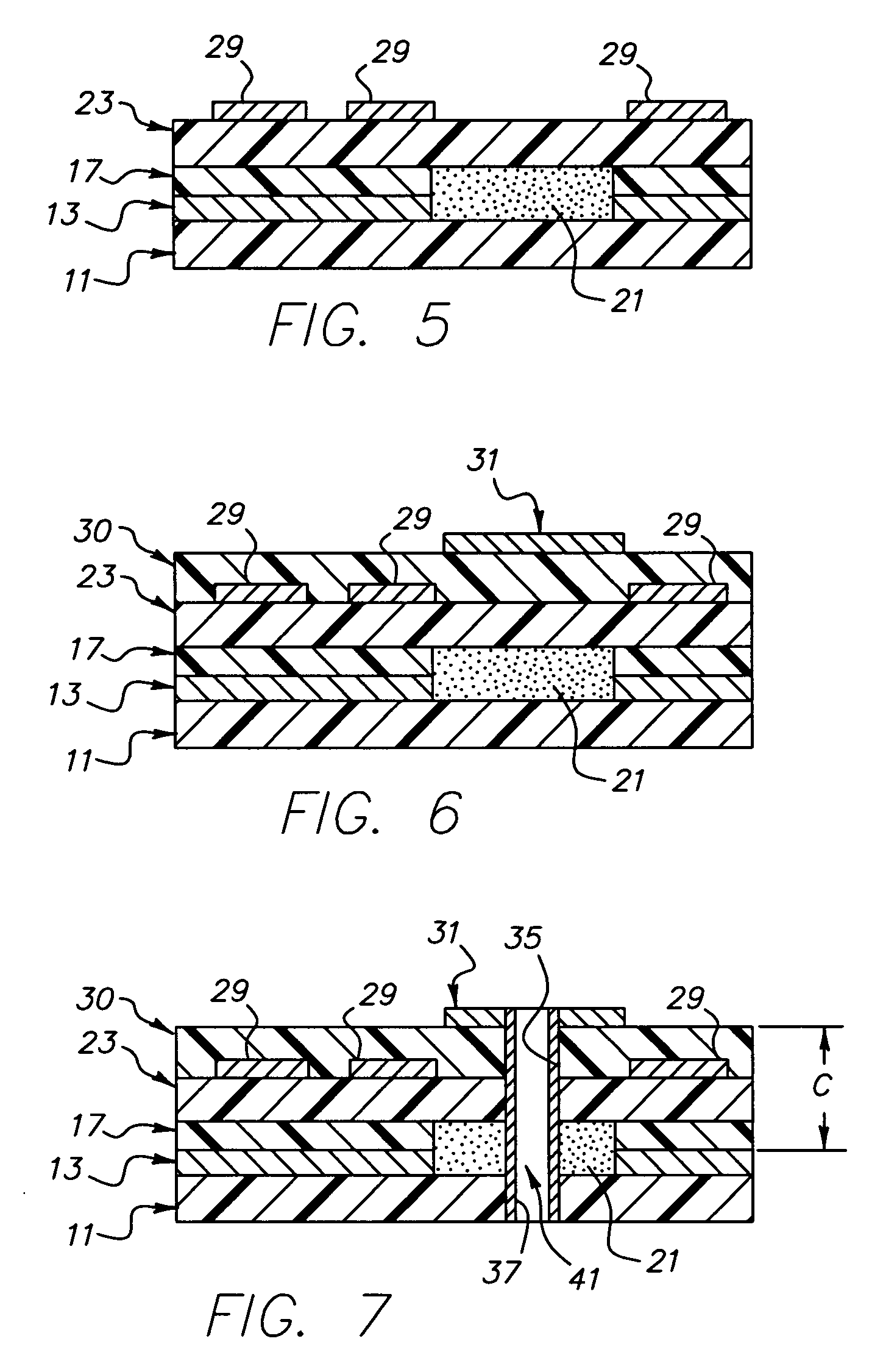Circuitized substrate with internal resistor, method of making said circuitized substrate, and electrical assembly utilizing said circuitized substrate
- Summary
- Abstract
- Description
- Claims
- Application Information
AI Technical Summary
Benefits of technology
Problems solved by technology
Method used
Image
Examples
example one
[0087] Fifty grams (gm) of cycloaliphatic epoxy resin (e.g., one sold under product designation “ERL-4211” by the Union Carbide Corporation, Danbury, Conn.) was mixed with about 50 gm of hexahydro-4-methylphthalic anhydride and 0.4 gm N,N dimethyl benzylamine. The mixed solution was stirred for approximately ten minutes to assure uniform mixing. Fifty gm of silver powder available from Degussa Corporation (having a business location at 379 Interpace Parkway, Parsippany, N.J.) was added to 7.5 gm of the mixed solution and formed into a printable paste. The silver powder included particles with an average size of about five microns. A layer of this paste material was then printed onto a copper substrate. This layer was then cured at approximately 190 degrees Celsius (C) for about two hours. The resistance of the cured resistors (3 inch long and 0.003 square inch cross section area) measured about 120 milliohms (mΩ).
example two
[0088] Fifty gm of the “ERL-4211” cycloaliphatic epoxy resin was mixed with about fifty gm of hexahydro-4-methylphthalic anhydride and 0.4 gm N,N dimethyl benzylamine. The mixed solution was stirred for about ten minutes to assure uniform mixing. Fifty gm of copper powder was added to 7.5 gm of the mixed solution and formed into a printable paste. The copper powder included particles with an average size of about four microns. A layer of this paste material was printed onto a copper substrate. This layer was then cured at approximately 190° C. for about two hours. The resistance of the cured resistors (3 inch long and 0.003 square inch cross section area) measured about 120 Mega ohms (MΩ).
example three
[0089] Fifty gm of the “ERL-4211” cycloaliphatic epoxy resin was mixed with about fifty gm of hexahydro-4-methylphthalic anhydride and 0.4 gm N,N dimethyl benzylamine. The mixed solution was stirred for about ten minutes to assure uniform mixing. Thirty-eight gm of copper and twelve gm of silver powder was added to 7.5 gm of the mixed solution and formed into a printable paste. The average particle sizes for the copper and silver powders ranged from about four to about five microns in diameter. A layer of this paste material was printed onto a copper substrate. This layer was then cured at approximately 190° C. for about two hours. The resistance of the cured resistors (3 inch long and 0.003 square inch cross section area) measured about 70 Mega ohms (MΩ).
PUM
| Property | Measurement | Unit |
|---|---|---|
| Dielectric polarization enthalpy | aaaaa | aaaaa |
| Electrical resistance | aaaaa | aaaaa |
| Electrical conductor | aaaaa | aaaaa |
Abstract
Description
Claims
Application Information
 Login to View More
Login to View More - R&D
- Intellectual Property
- Life Sciences
- Materials
- Tech Scout
- Unparalleled Data Quality
- Higher Quality Content
- 60% Fewer Hallucinations
Browse by: Latest US Patents, China's latest patents, Technical Efficacy Thesaurus, Application Domain, Technology Topic, Popular Technical Reports.
© 2025 PatSnap. All rights reserved.Legal|Privacy policy|Modern Slavery Act Transparency Statement|Sitemap|About US| Contact US: help@patsnap.com



